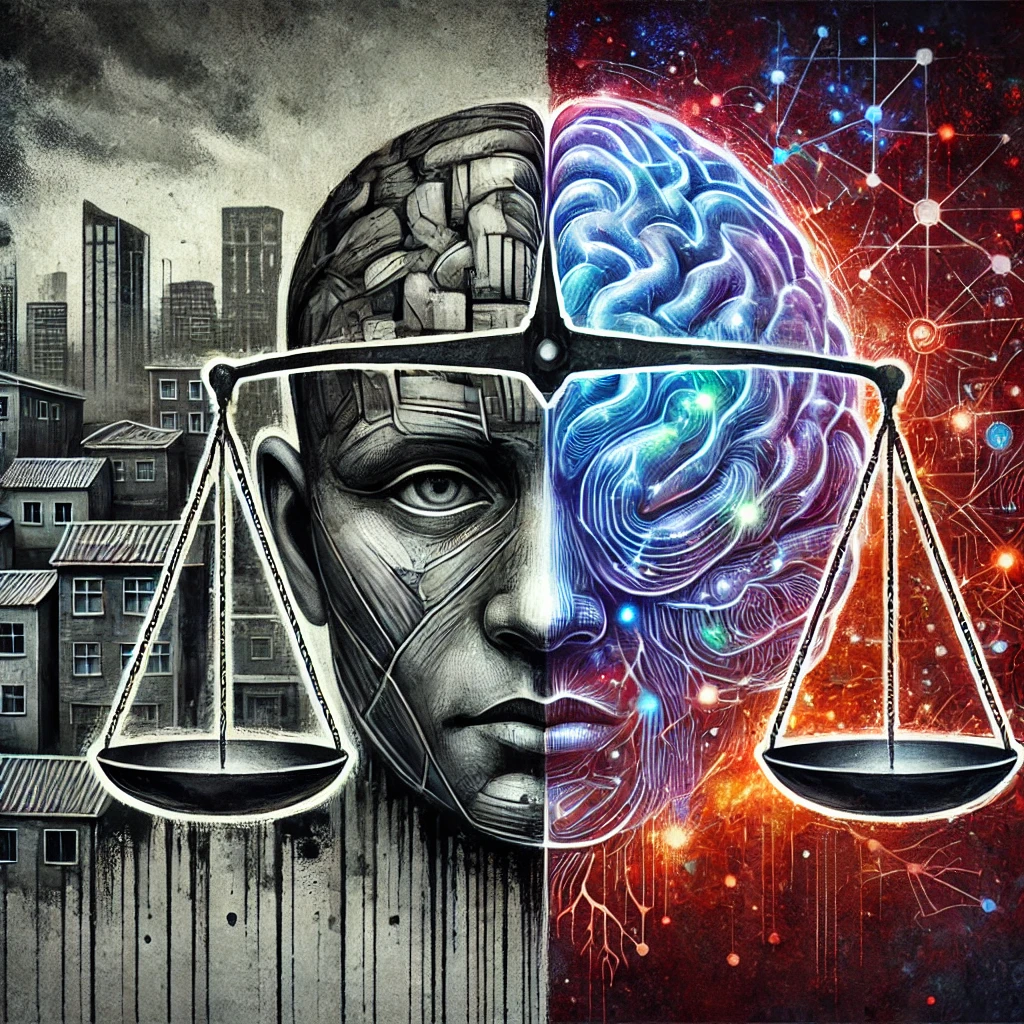Crime is a multifaceted phenomenon influenced by a blend of social and psychological factors. Criminology, as a discipline, seeks to unravel the complexities behind criminal behavior by examining how societal conditions and individual psychology interact. This article delves into the social and psychological dimensions of crime, highlighting their interplay and relevance to understanding criminal behavior.
1. Social Factors Influencing Crime
1.1 Economic Inequality
Economic disparities often contribute to crime rates, especially in regions where poverty and unemployment are prevalent. Limited access to resources can lead to desperation, fostering criminal activities as individuals seek alternative means of survival.
1.2 Urbanization and Social Disorganization
Rapid urbanization often leads to social disorganization, characterized by weakened community bonds and reduced social control. High-density urban areas with poor living conditions frequently experience elevated crime rates.
1.3 Peer Influence and Group Dynamics
Social learning theory emphasizes the role of peer influence in shaping behavior. Association with delinquent peers can normalize criminal activity, particularly among adolescents.
1.4 Family Structure and Parenting
Dysfunctional family environments, including neglect, abuse, or inconsistent discipline, are linked to delinquent behavior. Strong family support systems, conversely, serve as protective factors against crime.
1.5 Cultural and Subcultural Norms
Certain subcultures may glorify violence or other deviant behaviors, encouraging individuals to conform to these norms. Gang culture, for instance, perpetuates a cycle of crime through loyalty and reputation dynamics.
2. Psychological Factors Influencing Crime
2.1 Personality Traits and Disorders
Certain personality traits, such as impulsivity, aggression, and a lack of empathy, are associated with criminal tendencies. Disorders like antisocial personality disorder (ASPD) further exacerbate these behaviors.
2.2 Mental Health Issues
Untreated mental health conditions, such as depression, bipolar disorder, or psychosis, can contribute to criminal behavior. Addressing mental health needs is critical in reducing crime rates and recidivism.
2.3 Cognitive and Emotional Processes
Criminal behavior is often linked to cognitive distortions, such as justifying harmful actions or underestimating the consequences. Emotional dysregulation, including an inability to manage anger or frustration, can also lead to impulsive crimes.
2.4 Childhood Trauma and Development
Adverse childhood experiences (ACEs), such as abuse or neglect, significantly impact psychological development. Trauma-informed criminology emphasizes the need to address these root causes in rehabilitation efforts.
2.5 Psychopathy and Criminal Behavior
Psychopathy, characterized by manipulativeness, lack of remorse, and superficial charm, is a predictor of violent and repeat offending. Understanding this psychological profile is crucial in criminal profiling.
3. Interplay Between Social and Psychological Factors
The intersection of social and psychological influences creates a complex web of causation in criminal behavior.
3.1 Social Stress and Psychological Responses
Economic hardship, social exclusion, or discrimination can lead to psychological stress, triggering coping mechanisms that manifest in criminal acts.
3.2 Environment and Personality Interaction
An individual’s personality traits interact with their social environment to shape behavior. For example, an impulsive individual in a high-crime neighborhood may be more likely to offend.
3.3 Cycle of Crime and Victimization
Crime often perpetuates itself through cycles of victimization and offending. Social conditions may create environments where psychological vulnerabilities are exploited, perpetuating the cycle.
4. Criminological Theories Addressing Social and Psychological Factors
4.1 Strain Theory
Strain theory posits that societal pressures, such as the inability to achieve cultural goals, lead to frustration and deviance. This framework highlights the role of economic and social structures in crime.
4.2 Social Learning Theory
This theory explains how individuals learn criminal behavior through observation and imitation within their social environment, emphasizing the importance of role models and group dynamics.
4.3 Psychoanalytic Theory
Rooted in Freudian concepts, psychoanalytic theory explores unconscious drives and unresolved childhood conflicts as contributors to deviance. It underscores the role of early psychological development in shaping behavior.
4.4 Routine Activities Theory
This theory examines how social contexts and daily routines create opportunities for crime, highlighting the interaction between individual psychology and situational factors.
5. Addressing Crime Through Social and Psychological Interventions
5.1 Community-Based Programs
Strengthening community ties through education, employment opportunities, and recreational programs can reduce crime by addressing social root causes.
5.2 Psychological Counseling and Rehabilitation
Providing therapy and support for individuals with mental health issues or trauma can help break the cycle of crime. Cognitive-behavioral therapy (CBT) is particularly effective in reshaping thought patterns and behavior.
5.3 Family Support Initiatives
Parenting programs and family counseling address issues at the household level, reducing the likelihood of juvenile delinquency.
5.4 Policy Reforms
Legislative measures addressing social inequities and improving mental health care access are crucial in reducing crime rates and fostering rehabilitation.
Conclusion
Crime is a product of complex social and psychological interactions, requiring a holistic approach to understanding and prevention. By integrating insights from these dimensions, criminologists can develop more effective strategies to address the root causes of criminal behavior. As society evolves, continuous research and interdisciplinary collaboration are essential to staying ahead of emerging challenges in criminology.

